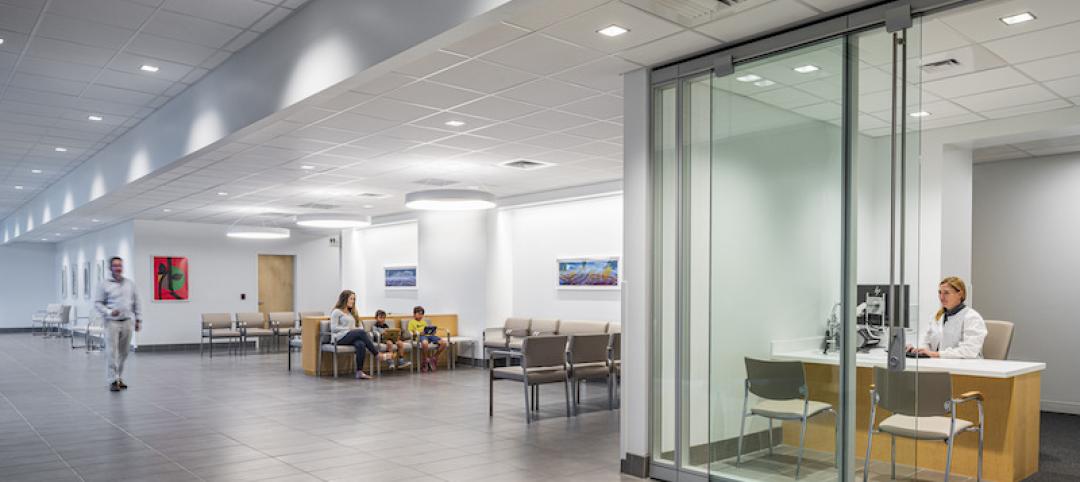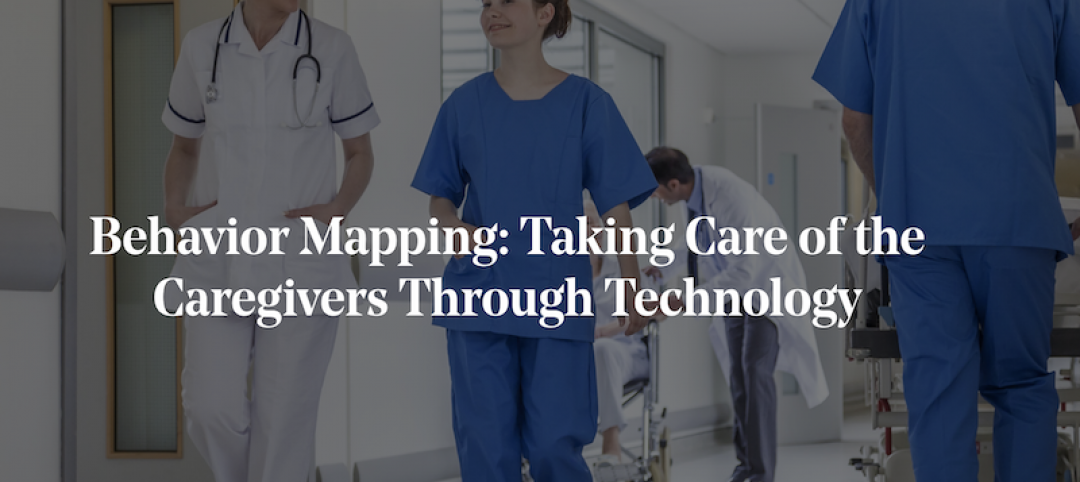At times, a healthcare system may find it lacks the capital resources to invest in a hospital, ambulatory or medical office building that is strategically important for long-term viability. When entering a new market, the financial risk can be magnified to the point that the investment – although critical to a system’s future – becomes unpalatable to a governing board. One solution to this conundrum is a developer-owned facility such as UF Health’s North Jacksonville Campus. This model transfers the health system’s capital resource obligations and associated financial risk to a developer.
UF Health North, as the facility is known, was part of a strategic initiative by UF Health to change its payer mix while expanding services to an underserved but growing market. To construct the first phase, a six-floor ambulatory care and medical office complex, the healthcare provider partnered with developer Landmark Healthcare Facilities LLC.
While UF Health owns the land, Landmark put up all the collateral required to get the construction loan for the building. Leveraging third-party capital and experience in this manner allowed the provider to preserve its own funds for upgraded equipment, physician recruitment, future phased expansions, and other needs throughout its network.
No-Cost Ownership
Despite having no out-of-pocket costs for the bricks and mortar, UF Health received a 50% ownership interest in the building when construction completed. No equity investment was required, and UF Health did not need to pledge any land or collateral to guarantee any project debt. The only requirement was that UF Health sign a 15-year lease for only its space in the building – not even a master lease for the entire facility.
Even so, UF Health maintained full control of the project, including
-
Approving the selection of the architect (GS&P) and major contractors.
-
Signage rights.
-
Approving all design drawings.
-
Right of First Refusal in the event Landmark puts the building up for sale.
-
A lease that protects UF Health’s best interests by listing numerous prohibited services and non-compete services.
The lease was also structured to avoid common accounting pitfalls, such as build-to-suit accounting regulations, so the project would not impact UF Health’s balance sheet. UF Health maintains all significant controls and covenants, so for all practical purposes, it’s as if they own the entire building outright. Thanks to the financial structure, however, the project has no significant impact on UF Health’s ability to borrow money in the future.

What Success Looks Like
Partnering with Landmark to realize this project as a developer-owned facility allowed UF Health to expand its market share and improve its payer mix while gaining a new high quality facility at limited cost. To top it all off, patient volumes at UF Health North have exceeded initial projections and the facility became revenue positive within the first eight months of operation while earning a 98th percentile patient satisfaction rating in the Emergency Department.
Due to its great success with Phase I, UF Health quickly began work on the second phase, a 92-bed pavilion expected to open in the summer of 2017. Planning is also underway on the execution of future phases, with the campus master plan envisioning an eventual 340-bed hospital with full diagnostic, interventional and support services and 240,000 square feet of medical offices.
More from Author
Gresham Smith | Aug 17, 2023
How to design for adaptive reuse: Don’t reinvent the wheel
Gresham Smith demonstrates the opportunities of adaptive reuse, specifically reusing empty big-box retail and malls, many of which sit unused or underutilized across the country.
Gresham Smith | May 24, 2023
Designing spaces that promote enrollment
Alyson Mandeville, Higher Education Practice Leader, argues that colleges and universities need to shift their business model—with the help of designers.
Gresham Smith | Apr 24, 2023
Smart savings: Commissioning for the hybrid workplace
Joe Crowe, Senior Mechanical Engineer, Gresham Smith, shares smart savings tips for facility managers and building owners of hybrid workplaces.
Gresham Smith | Mar 20, 2023
3 ways prefabrication doubles as a sustainability strategy
Corie Baker, AIA, shares three modular Gresham Smith projects that found sustainability benefits from the use of prefabrication.
Gresham Smith | Jan 19, 2023
Maximizing access for everyone: A closer look at universal design in healthcare facilities
Maria Sanchez, Interior Designer at Gresham Smith, shares how universal design bolsters empathy and equity in healthcare facilities.
Gresham Smith | Dec 20, 2022
Designing for a first-in-the-world proton therapy cancer treatment system
Gresham Smith begins designing four proton therapy vaults for a Flint, Mich., medical center.
Gresham Smith | Nov 21, 2022
An inside look at the airport industry's plan to develop a digital twin guidebook
Zoë Fisher, AIA explores how design strategies are changing the way we deliver and design projects in the post-pandemic world.
Gresham Smith | Feb 13, 2022
Helping maximize project dollars: Utility coordination 101
In this post, I take a look at the utility coordination services our Transportation group offers to our clients in an attempt to minimize delays and avoid unforeseen costs.
Gresham Smith | May 7, 2021
Private practice: Designing healthcare spaces that promote patient privacy
If a facility violates HIPAA rules, the penalty can be costly to both their reputation and wallet, with fines up to $250,000 depending on the severity.
Gresham Smith | Mar 4, 2021
Behavior mapping: Taking care of the caregivers through technology
Research suggests that the built environment may help reduce burnout.
















